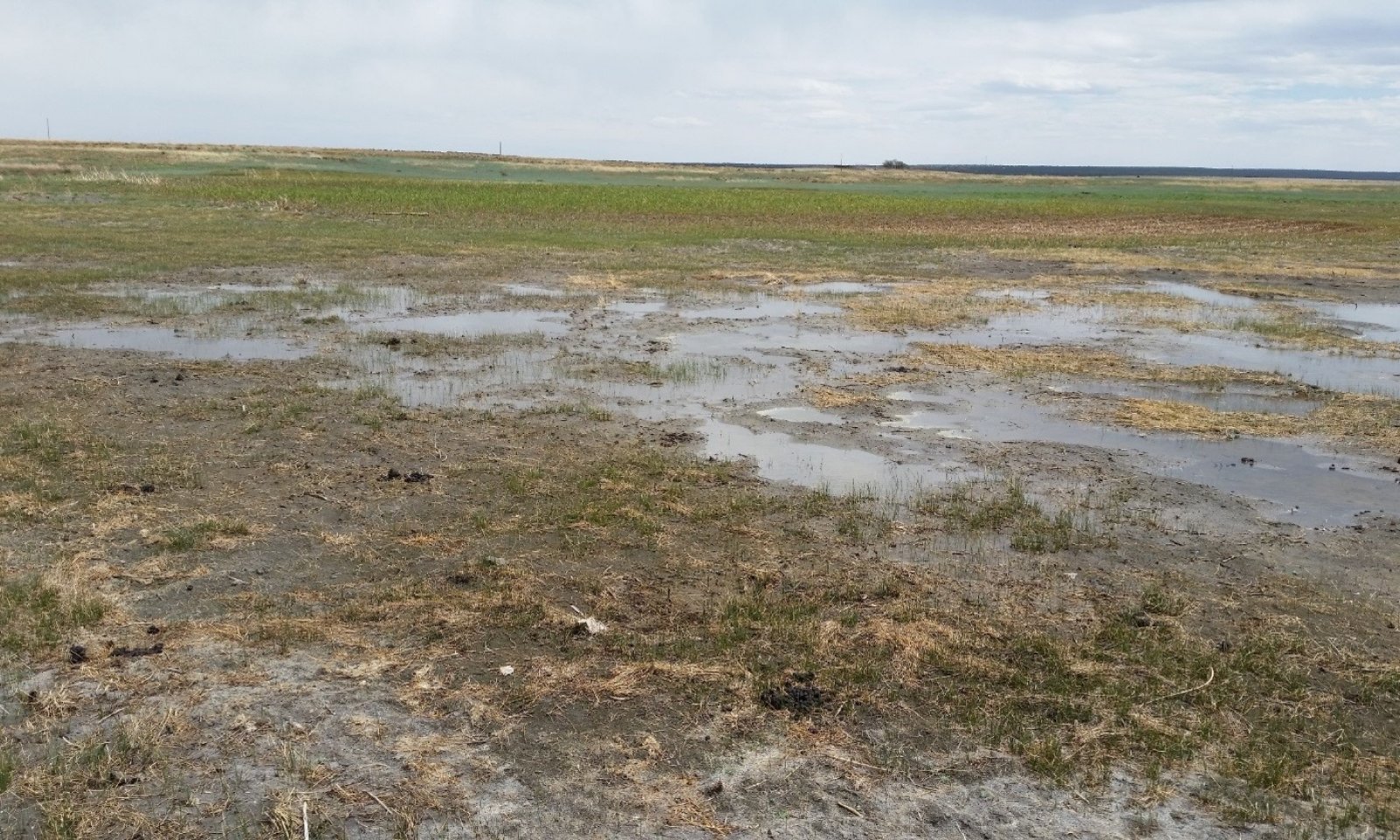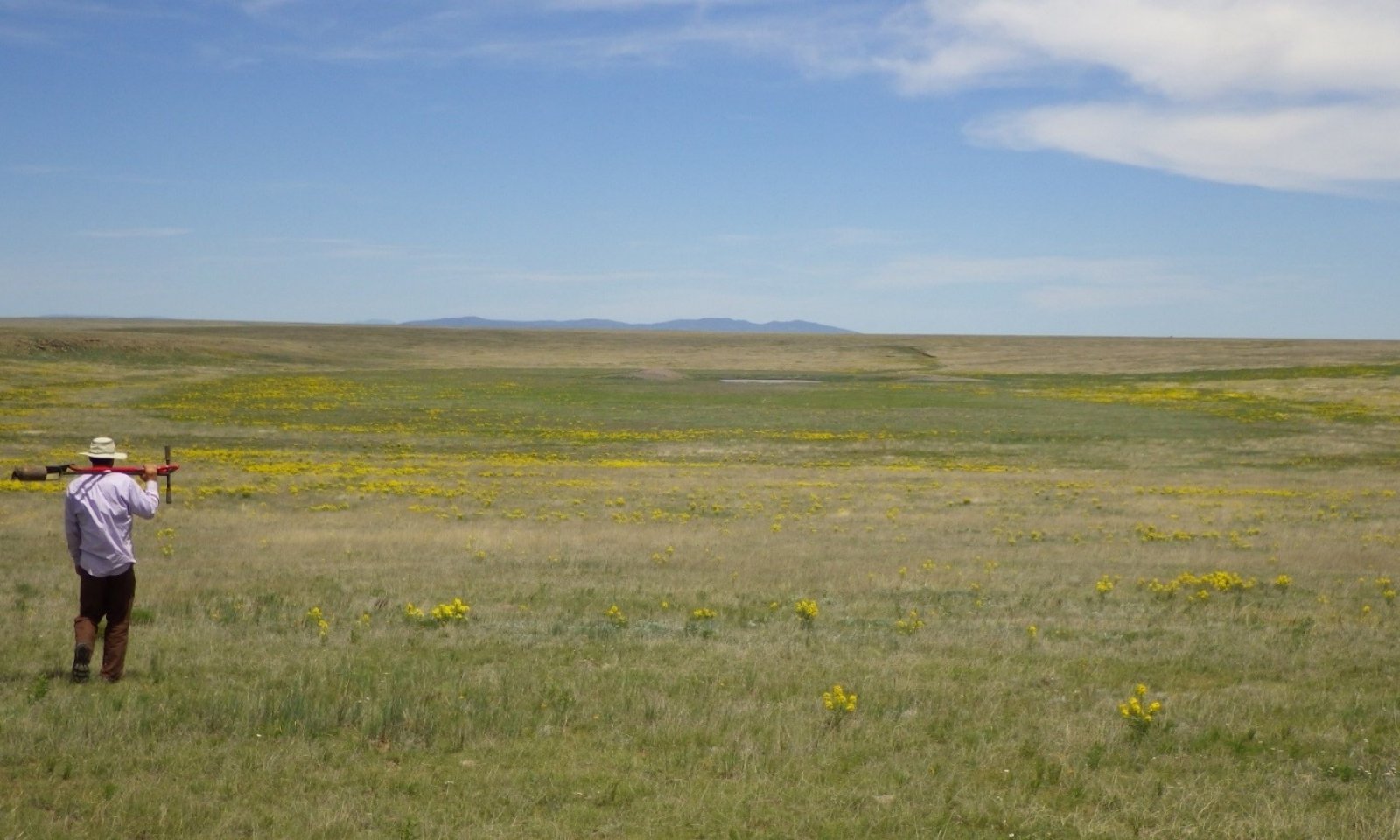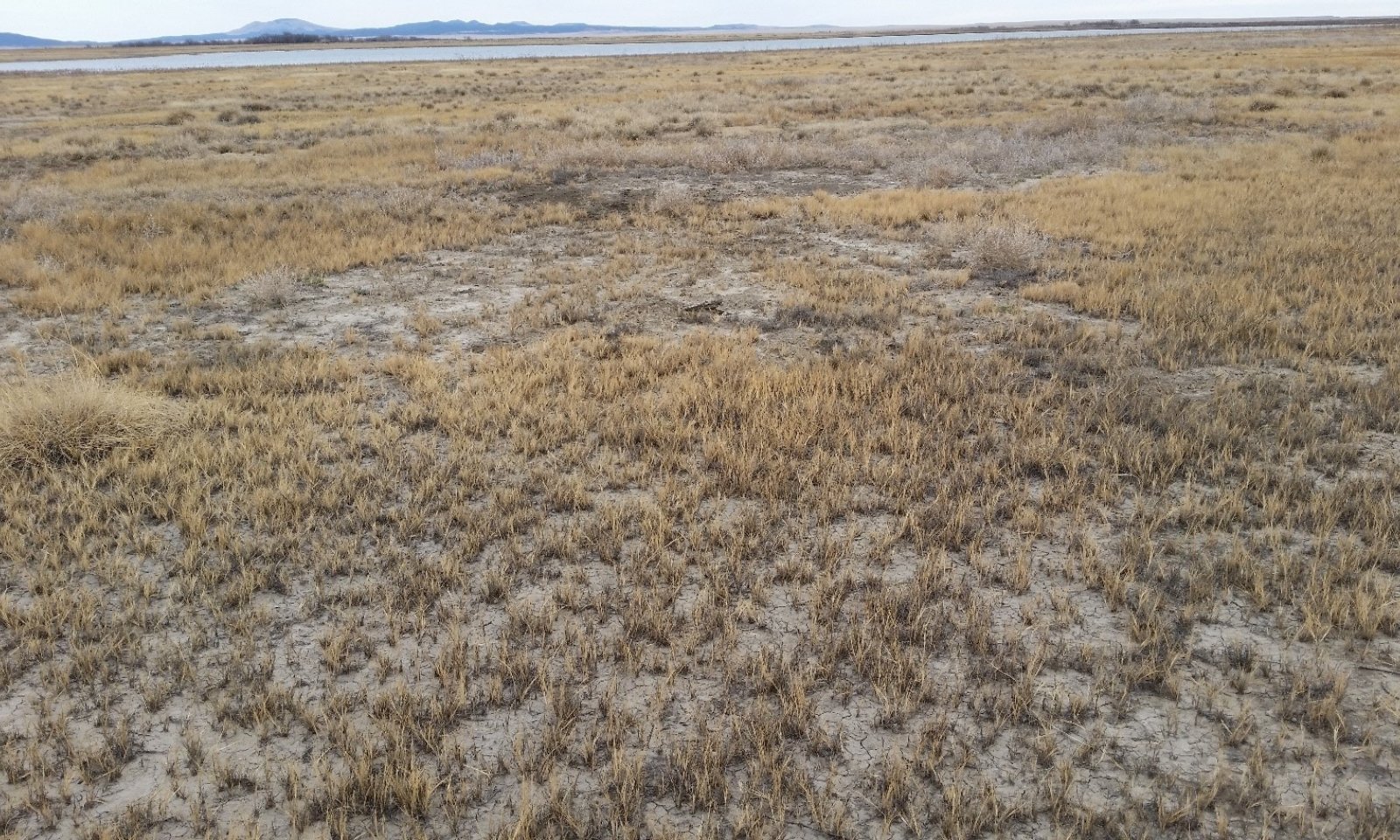
Playas
Scenario model
Current ecosystem state
Select a state
Management practices/drivers
Select a transition or restoration pathway
- Transition T1A More details
- Transition T1B More details
- Transition T1C More details
- Restoration pathway R2A More details
- Transition T2A More details
- Transition T2B More details
- Restoration pathway R3A More details
- Restoration pathway R3B More details
- Transition T3A More details
- Restoration pathway R4A More details
- Restoration pathway R4B More details
- Restoration pathway R4C More details
-
No transition or restoration pathway between the selected states has been described
Target ecosystem state
Select a state
State 1
Reference State








Description
This state represents the most ecologically stable conditions in terms of hydrologic function and resistance to erosion. Moreover, this state has the highest potential for productivity and plant diversity.
It is possible that more than one state occurs in playas that have neither been plowed nor excavated. However, if so, such playas are rare enough in the Canadian Plateaus that such state-level distinctions have yet to be differentiated.
Submodel
State 2
Excavated State






Description
This state occurs where a portion of the playa floor has been excavated in order to establish a stock tank. The hydrology of both of the floor and the annulus has been significantly altered.
Submodel
Description
This state occurs where a playa has been plowed. Given enough data, this state could probably be divided into multiple phases.
Submodel
State 4
Saline State



Description
This state occurs where a given playa has been the site of net groundwater discharge for a number of years. As a result, soils exhibit significant concentrations of salts—particularly gypsum. The term “saline” is used relatively here, as these soils are typically very slightly to slightly saline (EC values of 2-8 dS/M). However, gypsum contents and salt crusts at the soil surface both influence the plant community, with the latter inhibiting germination. As noted in Soil Hydrology and Water Features, such conditions are much more likely in playas that occupy lower positions on a landscape.
This state could theoretically be divided into at least two phases: one in which recent ponding is evidenced by a sparse, forb-dominated community on the playa floor; and another where a lack of recent ponding is evidenced by a more robust, grass-dominated community on the playa floor. However, since all field observations occurred in playas affected by current irrigation, community phase 4.1 is the only one that has been documented.
Submodel
Mechanism
Trigger event: A portion of the playa floor is excavated in order to establish a stock tank. A primary threshold is generally crossed during excavation, as a sizeable tank will markedly alter hydrology—both of the floor and the annulus. Slow variables: The area surrounding the stock tank receives frequent and heavy trampling, and palatable species experience intense grazing pressure. This leads to a reduction in palatable species and soil health parameters. Secondary thresholds are reached when certain palatable species are extirpated, and when significant amounts of topsoil are transported from the annulus to the playa floor.
Mechanism
Trigger event(s): Plowing kills perennial plants. Slow variables: Once crop planting ceases, pioneer species (mostly annual forbs) establish and their abundance gradually increases. Given frequent additions of run-on water, perennial grasses re-establish more rapidly than they would in an upland site. Threshold: After repeated cycles of plowing and/or applications of herbicides, certain species within the native seedbank are exhausted.
Mechanism
Landscape hydrology is altered such that the playa becomes a site of net groundwater discharge rather than recharge or flow-through. This is most often the result of the addition of irrigation water to landforms above the playa in question, but could theoretically occur in response to changes in weather patterns. Slow variables: In periods between ponding events, capillary action draws groundwater to the surface of the playa. Evapotranspiration leaves behind the salts (particularly gypsum) that were dissolved in the groundwater. Since the water table is elevated, ponding no longer flushes these salts from soils. Thus, over a number of years under the new hydrologic regime, significant amounts of salts accumulate in the playa soils.
Mechanism
Slow variables: In the absence of excavation activities, the tank gradually fills-in. Alternatively, this can be accomplished in a short span by pushing the berm into the tank with heavy equipment. Threshold: The tank fills to the point that hydrological response to rain events returns to that of state 1.
Mechanism
Trigger event(s): Plowing kills perennial plants. Slow variables: Once crop planting ceases, pioneer species (mostly annual forbs) establish and their abundance gradually increases. Given frequent additions of run-on water, perennial grasses re-establish more rapidly than they would in an upland site. Threshold: After repeated cycles of plowing and/or applications of herbicides, certain species within the native seedbank are exhausted.
Mechanism
Landscape hydrology is altered such that the playa becomes a site of net groundwater discharge rather than recharge or flow-through. This is most often the result of the addition of irrigation water to landforms above the playa in question, but could theoretically occur in response to changes in weather patterns. Slow variables: In periods between ponding events, capillary action draws groundwater to the surface of the playa. Evapotranspiration leaves behind the salts (particularly gypsum) that were dissolved in the groundwater. Since the water table is elevated, ponding no longer flushes these salts from soils. Thus, over a number of years under the new hydrologic regime, significant amounts of salts accumulate in the playa soils.
Mechanism
This restoration pathway will culminate in the establishment of a State 1 plant community. It will involve the re-introduction of extirpated species. If a stock tank is present, it must be filled in order to restore hydrology.
Mechanism
This restoration pathway will culminate in the establishment of a State 2 plant community. It will involve the re-introduction of extirpated species, and may require the excavation of a stock tank.
Mechanism
Landscape hydrology is altered such that the playa becomes a site of net groundwater discharge rather than recharge or flow-through. This is most often the result of the addition of irrigation water to landforms above the playa in question, but could theoretically occur in response to changes in weather patterns. Slow variables: In periods between ponding events, capillary action draws groundwater to the surface of the playa. Evapotranspiration leaves behind the salts (particularly gypsum) that were dissolved in the groundwater. Since the water table is elevated, ponding no longer flushes these salts from soils. Thus, over a number of years under the new hydrologic regime, significant amounts of salts accumulate in the playa soils.
Mechanism
Each restoration pathway from State 4 will necessarily involve a change in landscape hydrology which effectively lowers the water table below the playa in question. In most cases, this will involve a reduction or cessation of irrigation activities up-slope from the playa. The result is that water effectively percolates through the soils of the playa floor. Highly soluble salts such as sodium chloride and sodium bicarbonate are removed rapidly—perhaps in a matter of years. Gypsum, having only moderate solubility and often times being quite concentrated in State 4, will require decades to be markedly reduced, and perhaps centuries to be removed entirely. Which of the three restoration pathways the plant community takes will depend on a number of factors.
R4A will occur if a stock tank is either absent or removed from the playa floor, and if native, hydrophytic plants can be re-introduced to the playa floor. Re-introduction of plants may require the initial removal of salts (a slow process), followed by seeding activities.
Mechanism
Each restoration pathway from State 4 will necessarily involve a change in landscape hydrology which effectively lowers the water table below the playa in question. In most cases, this will involve a reduction or cessation of irrigation activities up-slope from the playa. The result is that water effectively percolates through the soils of the playa floor. Highly soluble salts such as sodium chloride and sodium bicarbonate are removed rapidly—perhaps in a matter of years. Gypsum, having only moderate solubility and often times being quite concentrated in State 4, will require decades to be markedly reduced, and perhaps centuries to be removed entirely. Which of the three restoration pathways the plant community takes will depend on a number of factors.
R4B will occur if a stock tank remains in the playa floor. Again, re-introduction of plants may require the initial removal of salts (a slow process), followed by seeding activities.
Mechanism
Each restoration pathway from State 4 will necessarily involve a change in landscape hydrology which effectively lowers the water table below the playa in question. In most cases, this will involve a reduction or cessation of irrigation activities up-slope from the playa. The result is that water effectively percolates through the soils of the playa floor. Highly soluble salts such as sodium chloride and sodium bicarbonate are removed rapidly—perhaps in a matter of years. Gypsum, having only moderate solubility and often times being quite concentrated in State 4, will require decades to be markedly reduced, and perhaps centuries to be removed entirely. Which of the three restoration pathways the plant community takes will depend on a number of factors.
R4C will occur if the extirpated plant community is not effectively re-introduced. Regardless of whether or not cultivation occurred prior to the accumulation of salts, early-seral forbs will dominate the playa floor if native grasses are not effectively re-introduced.
Model keys
Briefcase
Add ecological sites and Major Land Resource Areas to your briefcase by clicking on the briefcase (![]() ) icon wherever it occurs. Drag and drop items to reorder. Cookies are used to store briefcase items between browsing sessions. Because of this, the number of items that can be added to your briefcase is limited, and briefcase items added on one device and browser cannot be accessed from another device or browser. Users who do not wish to place cookies on their devices should not use the briefcase tool. Briefcase cookies serve no other purpose than described here and are deleted whenever browsing history is cleared.
) icon wherever it occurs. Drag and drop items to reorder. Cookies are used to store briefcase items between browsing sessions. Because of this, the number of items that can be added to your briefcase is limited, and briefcase items added on one device and browser cannot be accessed from another device or browser. Users who do not wish to place cookies on their devices should not use the briefcase tool. Briefcase cookies serve no other purpose than described here and are deleted whenever browsing history is cleared.
Ecological sites
Major Land Resource Areas
The Ecosystem Dynamics Interpretive Tool is an information system framework developed by the USDA-ARS Jornada Experimental Range, USDA Natural Resources Conservation Service, and New Mexico State University.




